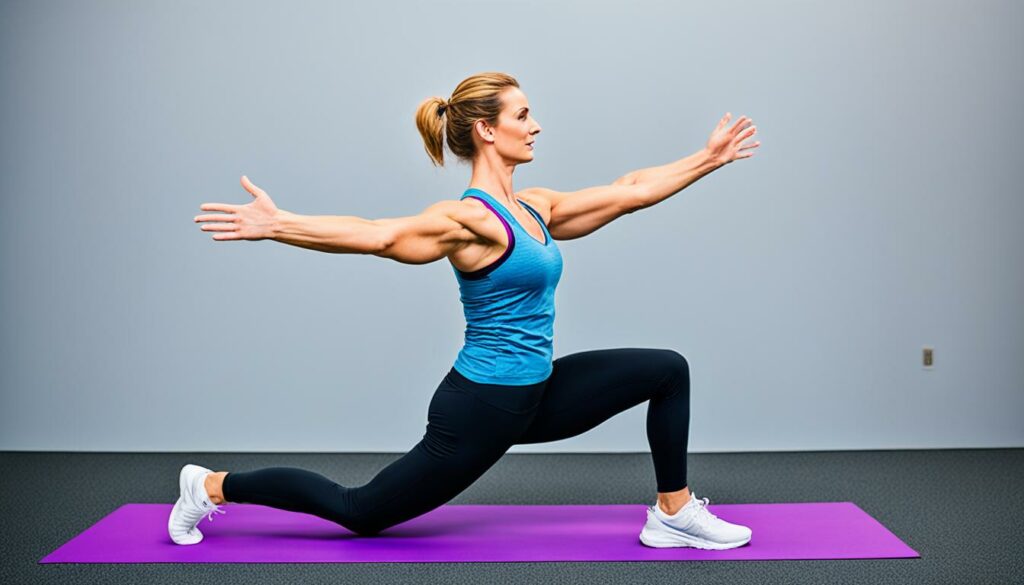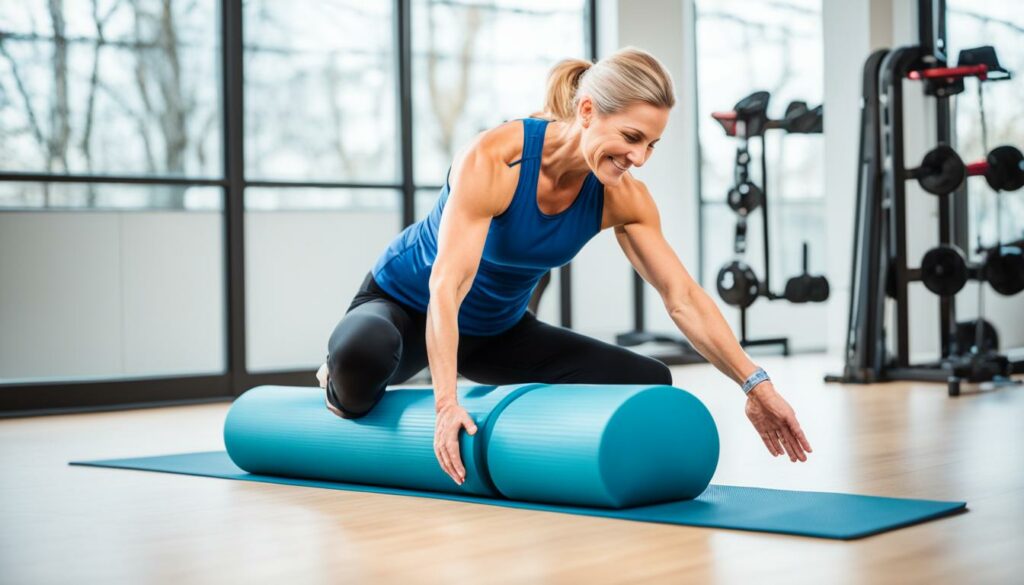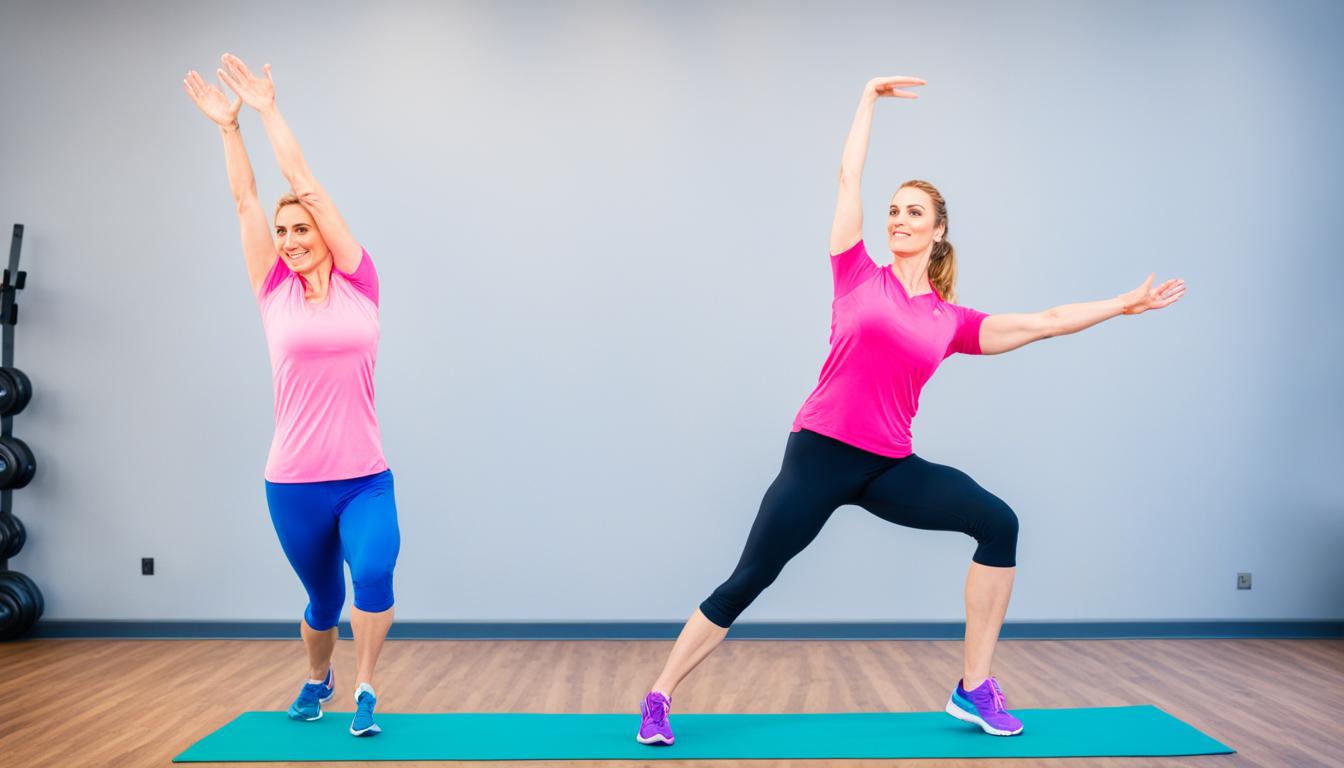In this comprehensive guide, we will explore the power of mobility exercises and how they can help you improve your flexibility, enhance your range of motion, and prevent injuries. Mobility exercises are a crucial component of any well-rounded fitness routine, as they target the underlying factors that contribute to joint and muscle function. By incorporating these targeted movements, you can unlock your body’s full potential and achieve greater mobility, stability, and overall physical performance. Whether you’re an athlete, a fitness enthusiast, or simply looking to improve your everyday movement, this article will provide you with the knowledge and tools to unlock the benefits of mobility exercises.
Key Takeaways
- Mobility exercises target the joints, ligaments, and connective tissues to improve range of motion and prevent injuries.
- Incorporating mobility exercises into your routine can enhance athletic performance and overall physical function.
- Proper form and technique, including breathing patterns and body awareness, are essential for safe and effective mobility exercises.
- Customizing mobility programs to address individual needs and progressively challenging your body is key to maximizing the benefits.
- Utilizing specialized mobility tools like foam rollers, resistance bands, and lacrosse balls can further enhance the effectiveness of your mobility routines.
What are Mobility Exercises?
Mobility exercises are a specific type of movement-based activity that focus on improving joint and muscle function. Unlike traditional stretching, which primarily targets the muscle tissue, mobility exercises engage the entire kinetic chain, including the joints, ligaments, and connective tissues. The primary purpose of mobility exercises is to enhance your body’s ability to move through a full range of motion with ease and control.
Definition and Purpose
Mobility exercises are designed to improve your overall joint and muscle mobility, allowing for greater freedom of movement and enhanced physical performance. These exercises target the underlying factors that contribute to restricted range of motion, such as tight connective tissues, limited joint capsule mobility, and neuromuscular imbalances. By addressing these limitations, mobility exercises help to restore proper joint function and facilitate more efficient, pain-free movement patterns.
Differences from Stretching
While both mobility exercises and stretching aim to improve flexibility and range of motion, there are distinct differences between the two. Stretching primarily focuses on lengthening the muscle fibers, whereas mobility exercises engage the entire kinetic chain, including the joints, ligaments, and connective tissues. Mobility exercises often involve controlled, dynamic movements that challenge the body’s ability to move through a full range of motion, while stretching typically involves static, passive lengthening of the muscles.
Benefits of Incorporating Mobility Exercises
Incorporating mobility exercises into your fitness routine can provide a multitude of benefits that can positively impact your overall health and performance. One of the primary advantages of mobility exercises is the improvement in your range of motion. By targeting the joint capsules and connective tissues, you can increase the available range of motion in your joints, allowing for greater freedom of movement and improved joint function.
Improved Range of Motion
Mobility exercises focus on enhancing the flexibility and mobility of your joints, which can lead to a significant increase in your overall range of motion. This improved range of motion can translate to better performance in various physical activities, from everyday tasks to more demanding sports and exercises. By improving your range of motion, you can execute movements with greater ease, reduced risk of injury, and enhanced efficiency.
Injury Prevention
Incorporating mobility exercises into your fitness regimen can also play a crucial role in injury prevention. Tight, immobile joints and limited range of motion can often be a contributing factor to various musculoskeletal injuries. By addressing these limitations through targeted mobility exercises, you can enhance the stability and resilience of your joints, tendons, and ligaments, reducing the likelihood of sprains, strains, and other related injuries.
Enhanced Athletic Performance
Mobility exercises don’t just improve your range of motion and reduce injury risk; they can also enhance your overall athletic performance. When your joints and muscles are able to move through a full, unrestricted range of motion, you can generate more power, improve coordination, and execute complex movement patterns with greater ease. This translates to better agility, speed, and overall athletic prowess, making mobility exercises an invaluable component of any well-rounded fitness regimen.
Mobility Exercises for Different Body Parts
Mobility exercises can be tailored to target specific areas of the body, addressing the unique needs and demands of each region. In this section, we will explore a variety of mobility exercises for the upper body, lower body, and core/spine.
Upper Body Mobility Drills
Improving upper body mobility is crucial for maintaining optimal range of motion in the shoulders, elbows, and wrists. Some effective upper body mobility exercises include shoulder circles, thoracic spine rotations, and wrist flexion and extension drills. These targeted mobility exercises help to enhance joint joint mobility drills and promote overall upper body upper body mobility function.
Lower Body Mobility Exercises
The lower body is another key area of focus for mobility exercises. Improving hip, knee, and ankle mobility can help to increase flexibility, reduce the risk of injury, and enhance athletic performance. Examples of lower body lower body mobility exercises include hip circles, quadriceps stretches, and ankle dorsiflexion drills.
Core and Spine Mobility Routines
Maintaining mobility in the core and spine is essential for overall body function and stability. Incorporating core and spine mobility exercises, such as cat-cow poses, lumbar rotations, and thoracic spine extensions, can help to improve spinal flexibility, enhance postural alignment, and support optimal mobility exercises and joint mobility drills.
| Mobility Exercise | Target Area | Benefits |
|---|---|---|
| Shoulder Circles | Upper Body | Enhances shoulder joint mobility and range of motion |
| Hip Circles | Lower Body | Improves hip flexibility and rotation |
| Cat-Cow Pose | Core and Spine | Increases spinal mobility and promotes better posture |
mobility exercises
Mobility exercises are a crucial component of any comprehensive fitness routine, as they target the underlying factors that contribute to joint and muscle function. These targeted movements engage the entire kinetic chain, including the joints, ligaments, and connective tissues, to enhance your body’s ability to move through a full range of motion with ease and control.
By incorporating mobility exercises, you can unlock your body’s full potential and achieve greater joint mobility, improved movement preparation, and enhanced functional movement patterns. These exercises work to address restrictions and imbalances within the musculoskeletal system, ultimately leading to improved overall physical performance and reduced risk of injury.
Whether you’re an athlete, a fitness enthusiast, or simply looking to improve your everyday movement, incorporating mobility exercises into your routine can provide a multitude of benefits. By dedicating time to these targeted movements, you can experience increased range of motion, better joint function, and a more resilient, injury-resistant body.
Integrating Mobility into Your Workout Routine
Effectively incorporating mobility exercises into your workout routine is crucial for maximizing their benefits and ensuring a balanced, well-rounded approach to your fitness. By strategically including mobility work before and after your primary training sessions, you can prime your body for optimal movement and facilitate a smooth recovery process.
Warmup Sequences
Dedicating time to mobility-focused warmup sequences can significantly enhance your overall performance and reduce the risk of injury. Begin your workout with a series of dynamic mobility exercises that target the major muscle groups and joints you’ll be engaging during your main training. This movement preparation phase helps to lubricate the joints, increase blood flow, and activate the necessary muscle patterns for the workout ahead.
Cooldown Routines
Incorporating mobility exercises into your post-workout cooldown is equally important. After pushing your body through the demands of your training, a structured cooldown routine can help improve recovery, reduce muscle soreness, and maintain your range of motion. Allocate 5-10 minutes at the end of your workout to perform a series of static stretches, foam rolling, and targeted mobility drills focused on the areas you’ve just worked.
Proper Form and Technique
Executing
mobility exercises
with proper form and technique is crucial for maximizing the benefits and ensuring safe, effective results. Two key aspects to consider are breathing patterns and body awareness.
Breathing Patterns
Proper breathing is essential during
mobility exercises
and
joint mobility drills
. Focusing on deep, controlled breathing can help you relax and release tension in the muscles and connective tissues. Inhale through your nose and exhale through your mouth, allowing your diaphragm to guide the movement. Coordinate your breathing with the specific movements to enhance the mind-body connection and facilitate greater range of motion.
Body Awareness
Cultivating body awareness is fundamental to performing
mobility exercises
effectively. Tune in to the sensations and feedback from your body as you move through the exercises. Pay attention to the joint positioning, muscle engagement, and overall movement patterns. This heightened awareness will help you make adjustments and ensure proper technique, ultimately leading to more significant improvements in
mobility
and
range of motion
By prioritizing proper form and technique, with a focus on breathing patterns and body awareness, you’ll unlock the full potential of your
mobility exercises
and embark on a journey of enhanced physical capabilities and reduced injury risk.
Common Mobility Mistakes to Avoid
While mobility exercises can provide numerous benefits, it’s essential to be mindful of common mistakes that can hinder progress or even lead to injury. Some of the most prevalent mobility exercise mistakes to avoid include:
- Rushing through the movements – Mobility exercises are designed to be performed slowly and with control. Rushing through the exercises can limit their effectiveness and increase the risk of injury.
- Neglecting proper form – Maintaining proper form is crucial for targeting the intended muscle groups and joints. Improper form can lead to compensation patterns and potentially cause harm.
- Skipping the warmup – Failing to properly warm up the body before engaging in mobility drills can reduce the effectiveness of the exercises and increase the risk of injury.
- Overlooking individual needs – One-size-fits-all mobility exercises may not be suitable for everyone. Addressing individual flexibility and joint limitations is essential for maximizing the benefits.
- Overtraining – While consistency is important, overtraining the same muscle groups or joints can lead to overuse injuries and diminish the overall effectiveness of your mobility routine.
- Ignoring pain or discomfort – If you experience persistent pain or discomfort during or after mobility exercises, it’s important to listen to your body and seek guidance from a healthcare professional.
By being mindful of these common mobility exercise mistakes and making adjustments to your movement preparation routine, you can ensure safe and effective progress in improving your joint mobility and injury prevention.
Customizing Mobility Programs
Maximizing the benefits of mobility exercises requires a customized approach that addresses your individual needs and allows for progression over time. Customizing your mobility program involves two key elements: addressing individual needs and incorporating progression and regression strategies.
Addressing Individual Needs
No two bodies are alike, and your mobility requirements may differ from those of your peers. By assessing your unique physical attributes, limitations, and goals, you can develop a targeted mobility program that caters to your individual needs. This may involve focusing on specific joint ranges of motion, addressing muscle imbalances, or addressing any underlying injuries or limitations.
Progression and Regression
Mobility is a journey, and your program should evolve as you progress. Incorporate progressive challenges, such as increasing the range of motion, adding resistance, or incorporating more complex movement patterns, to continually challenge your body and push the boundaries of your mobility exercises and joint mobility drills. Conversely, it’s important to include regression options, allowing you to scale back the difficulty when necessary, ensuring that your individual needs are met throughout your fitness journey.
By customizing your mobility program and embracing a progressive-regressive approach, you can ensure that your mobility exercises are tailored to your unique requirements, leading to enhanced range of motion, improved joint function, and a reduced risk of injury.

Mobility Tools and Equipment
While mobility exercises can be performed with minimal equipment, incorporating specialized tools can enhance the effectiveness of your mobility routines and provide additional benefits. Some of the most commonly used mobility tools include:
Foam Rollers
Foam rollers are versatile tools that can be used to target muscle groups and connective tissues, promoting better mobility and myofascial release. By applying pressure and rolling the body over the foam roller, you can help relieve muscle tension, improve circulation, and enhance your overall range of motion.
Resistance Bands
Resistance bands are lightweight, portable tools that can be used to add an extra challenge to your mobility exercises. These bands provide variable resistance, allowing you to target specific muscle groups and joint movements while improving strength, stability, and joint mobility.
Lacrosse Balls
Lacrosse balls are small, dense balls that can be used to target specific trigger points and areas of tightness. By applying focused pressure with the lacrosse ball, you can release muscle knots, improve tissue quality, and enhance the overall mobility of your joints and surrounding musculature.
Conclusion
In conclusion, mobility exercises are a powerful tool for unlocking our body’s full potential and enhancing our overall physical well-being. By targeting the joints, connective tissues, and neuromuscular systems, mobility exercises can improve our range of motion, prevent injuries, and boost athletic performance.
Incorporating mobility exercises into our fitness routine is a holistic approach to promoting better movement, reducing the risk of injury, and optimizing physical capabilities. Whether we’re athletes striving for peak performance or individuals seeking to improve our everyday functionality, investing time and effort into mobility exercises can yield countless benefits.
By understanding the principles of mobility exercises and tailoring our approach to our individual needs, we can unlock the true power of our bodies and unlock new levels of flexibility, stability, and overall physical well-being. As we continue on our health and fitness journey, let us embrace the transformative power of mobility exercises and reap the rewards of improved range of motion, injury prevention, and enhanced athletic performance.

